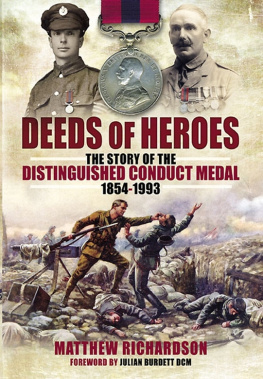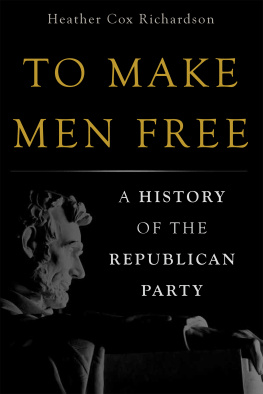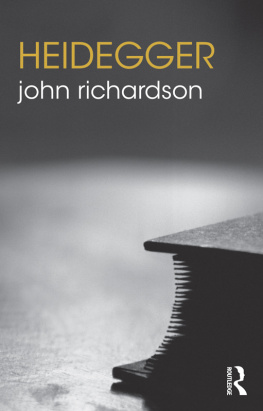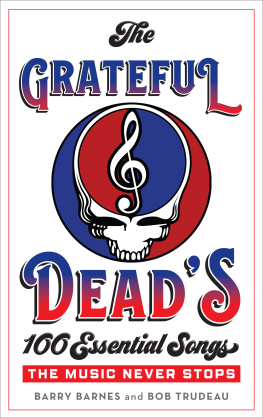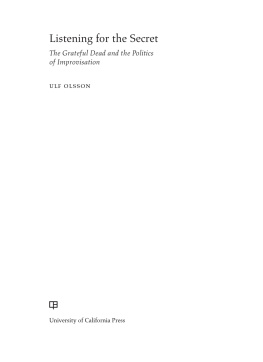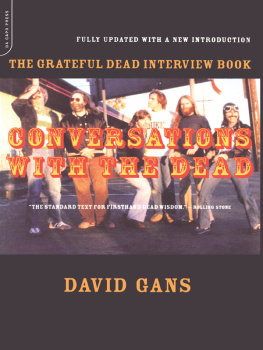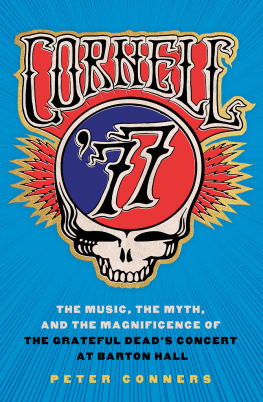

The author and publisher have provided this e-book to you for your personal use only. You may not make this e-book publicly available in any way. Copyright infringement is against the law. If you believe the copy of this e-book you are reading infringes on the authors copyright, please notify the publisher at:
us.macmillanusa.com/piracy.
Contents
There is a road,
no simple highway,
between the dawn
and the dark of night.
R IPPLE, LYRICS BY R OBERT H UNTER
Five decades ago, the Grateful Dead emerged from a vibrant San Francisco arts scene to claim national attention. Along with a supportive community and plenty of psychoactive drugs, they pioneered a new and ecstatic form of expression called the rock concert. For a brief time, they helped make San Francisco a center of the rock music world, and almost three decades after that, they were the nations most popular touring band. While many of their peers flashed brilliantly across the American scene, the Grateful Dead became one of the countercultures most distinctive and durable institutions. This book raises a deceptively simple question: why?
The best answer probably wont be found in the Grateful Deads substantial studio output. Although their songbook contains many gems and reflects a rich array of American idioms, the Dead acknowledged that their recordings were neither consistently excellent nor broadly popular. The albums sold well over time, but the Dead never had a number one song, and they cracked the top ten only oncemore than two decades after their formation. Nor was the Deads success due to their showmanship. Their live performances were their calling card, they cared about the audiences experience, and their sound system was legendary, but they put almost no energy into the usual rock theatrics. They skipped the stagy strutting, flashy costumes, and special effects. In fact, they usually skipped the set list. The presentation was so stripped down that a single smile from lead guitarist Jerry Garcia could delight the audience.
What, then, accounts for the Deads long-standing popularity? Their image was certainly a factor. Hip, funny, and articulate, they seemed to create effortlessly and without artifice. Their authenticity also satisfied a countercultural ideal. For many, the Grateful Dead were cool because they gave mainstream American culture a wide berth and still managed to flourish. In this sense, they were living proof that hippies could make it on their own preferred terms. Wherever the Grateful Dead played, the Summer of Love lived on, long after the original San Francisco hippies headed for the hills and their Haight-Ashbury neighborhood descended into squalor.
But the Grateful Deads status as counterculture heroes masks an even more important source of their popularity. Although they offered a fully formed alternative to Americas sober, God-fearing, and profit-maximizing ways, a large part of their appeal arose not from their resistance to American culture, but rather from their uncanny ability to tap its inexhaustible utopian energies. Garcia, in fact, regarded the Dead as the American experiment in action. Were basically Americans, and we like America, he said. We like the things about being able to express outrageous amounts of freedom. Always more than a series of shows, Grateful Dead tours were mobile social laboratories, chances to experiment and innovate, not only musically but also personally and even spiritually. Living on the edge of novelty, inventing their own ways and means, the Dead absorbed and supplemented a rich strain of American culture that included literature and the visual arts as well as music. But even compared to their key influences, the Dead pushed their utopian ideals to another level in their music, organization, and community.
Utopian communities are usually organized around religious, political, or social goals, and though these aspirations hovered around the Dead and their tribe, they never quite defined them. The Dead declined to systematize or justify their enterprise publicly, and they often downplayed any form of intentionality. Nobodys making any real central decisions or anything, Garcia said in 1969. Everythings just kind of hashed out. It stumbles. It stumbles, then it creeps, then it flies with one wing, and then it flies with one wing and bumps into trees and shit. Garcias remark was accurate as far as it went; the Dead usually lacked a formal business plan and collectively adapted to changing circumstances. It also reflected the Deads hippie sprezzatura ; they carefully wrapped their aspirations in studied nonchalance and self-deprecation. But if their enterprise was neither a traditional utopian community nor a conventional corporation, the Dead often discussed and consistently enacted the chief characteristic of all utopian practice: the transformation of the everyday. Their project was an attempt to free themselves and their community from ordinary, straight, normal life. The Dead called that liberation getting high, and they sought to transcend ordinary experience through continuous experimentation and improvisation in their music and lives.
Rather than argue for the centrality of the Deads utopian ideals, Ive used them to organize the bands unique story. The first part of No Simple Highway explores the Deads commitment to ecstasynot the drug, but the urge to transcendwhich was always at the heart of their project. A subjective experience of total rapture, ecstasy has a long, diverse, and cross-cultural history, but it often involves music, dancing, psychotropic drugs, and altered states of consciousness. Ecstatic experiences and their interpretation often change the subjects values and worldview permanently, and the Grateful Dead regularly described their project in those terms. The Grateful Dead is not for cranking out rock and roll, its not for going out and doing concerts or any of that stuff, I think its to get high, Garcia said in 1972. Im not talking about unconscious or zonked-out, Im talking about being fully conscious. Garcias statement also reflects a historically specific understanding of what it was to be an artist, one that placed enormous value on intense and transformational experience. The first section of the book traces that understanding to the Deads cultural milieu, their major influences, and the rapturous events that transformed a bar band into nationally recognized artists.
The Dead were devoted to mobility as well as to ecstasy, and the books second section reflects their life onand songs aboutthe open road. Making a virtue of necessity, the Dead put touring ahead of recording, and their lyrics elevated geographical and psychic journeys to mythic importance. Their key influences also associated mobility with freedom and discovery, but the Dead supercharged that impulse, created a larger social space for its expression, and modeled two generations of youthful wanderlust. When thousands of fans began following the Deads tours, Garcia suggested that the Deads nomadic culture was that generations archetypal American adventure, the equivalent of joining the circus or riding freight trains. The middle section of the book recounts the Deads transition from a Haight-Ashbury icon to a touring simulacrum of the 1960s counterculture.
Finally, the Dead were dedicated to community. This commitment, arguably the most important for understanding their achievement, organizes the final section of the book. From the outset, the Deads enterprise was tribal as well as utopian. Their inner circle consisted of the musicians, managers, lyricists, and crew members who lived together in various configurations, shared their earnings more or less equally, and made decisions more or less democratically. As the touring operation grew, so did the core group of employees, friends, and family. Connected by the Deads annual migrations, newsletter, and later its website, a growing cohort of Dead Heads swelled the progress. By the early 1980s, Dead Heads dominated the Deads media coverage. Despite its gypsy image, the Dead Head community always included a professional (and preprofessional) element; the Deads record company estimated that three-quarters of their audience was college educated, and the band regularly received glowing reviews in elite campus newspapers. Indeed, some Dead Headsincluding a US vice president and two senatorsbecame downright respectable. The Deads communal impulse also informed their corporation, which was headed by a crew member and eventually grossed more than $30 million annually in touring revenue alone. Again, many of the Deads precursors and peers emphasized community, but the Dead were uniquely successful at fostering it: so successful, in fact, that the Dead community is still thriving two decades after the bands dissolution.
Next page

